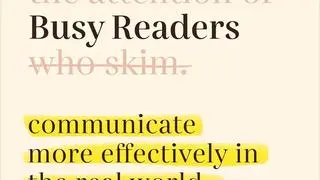Five years after the publication of Democrats and Dissenters, with its several deeply moving biographical sketches of important Indian intellectuals fading from public memory, Ramachandra Guha has come up with another.
His Rebels Against the Raj — Western Fighters for India’s Freedom brings back to popular attention the life and times of a few of many remarkable foreigners who came to live in India and joined hands with Indians in their struggle for freedom from British rule under Mahatma Gandhi’s leadership.
The foreigners in India’s freedom struggle contributed to its success.
Later, those who were alive after Independence, joined the discussions, often forcefully, on India’s future course.
In doing so, a catholic India stood out in a world of ultra-nationalism and exclusions. It quietly accepted that these foreigners had earned the right to speak as stakeholders of a country they considered their own and for whose freedom they had fought and suffered.
The book is aptly dedicated to Jean Drèze, the well-known Indian economist, formerly a Belgian, clearly to disprove the notion that “no foreigner, they (meaning the BJP and the RSS among others?) believe, can teach them anything.”
The seven individuals, whose lives Guha covers in his book, include four who, decades after, are still easily recognisable by many Indians — the British firebrand, Annie Besant, the forthright journalist BG Horniman, Samuel Evan Stokes (later Satyananda, after his conversion to Hinduism), and the Mahatma Gandhi acolyte Mira Behn (formerly Madeleine Slade).
The four less easily recalled, but important for all Indians to know, ones Guha introduces us to, are a former important member of the Communist Party of Great Britain and later a rabid anti-communist, Philip Spratt, Sarala (formerly Catherine Mary Heilman) and the missionary Dick (Ralph Richard) Keithahn.
Five of the seven were British and the remaining two — Stokes and Keithahn — American.
Fighting for India
Perhaps ‘renegade’ used by Guha is too strong a term to describe five of seven individuals figuring in this book who were British, for what “they did in India for India,” and for believing, as EM Forster does in his famous 1939 essay, ‘What I Believe’, that “Tolerance, good temper and sympathy — they are what matter really, and if the human race is not to collapse, they must come to the front before long.”
In the lead up to Independence, those featured in Guha’s book, had stood firmly on Gandhi’s side and the right of India to run itself. All of them had at some stage been imprisoned and at least two of them had been externed if only for a while.
One of them, BG Horniman, the famous editor of the Bombay Chronicle and friend of Mahatma Gandhi was even extradited to his own country, England, only to make his way back to India and live out his life in Bombay by a clever exploitation of a loophole in the law.
Women, ecological issues
The ground-breaking work in women’s empowerment in Kumaon by Sarala and the environmental concerns she and Mira Behn raised — and which are even more relevant today — have been well brought out by Guha. The pioneering efforts of Stokes in making Himachal Pradesh the ‘apple State’ of India is a remarkable story that is well recounted in the book.
Going through the website of Gandhigram Rural Institute one cannot find even a passing reference to the American missionary, the abstemious ascetic Dick Keithahn, who conceptualised it, but Guha sets the record straight.
The absurdity of the Theosophical movement is too lightly touched upon by Guha in his otherwise forthright biographical sketch of Annie Besant. Ever the objective historian, Guha does, however, give a detailed account of her significant contributions to the freedom struggle as well as the establishment of the Banaras Hindu University.
He brings out Annie Besant’s often antagonistic and sometimes acrimonious relationship with Gandhi. He also highlights her prescient observation that Gandhi’s ways would lead to anarchy and mass coercion.
Perhaps Guha didn’t intend it, but the Gandhi we encounter in this book has a faint cult-like air about him with his ashrams where he controlled everything and the intimate and often intrusive attention he brought to bear on the lives of his acolytes like Sarala and Mira Behn. This is a side of Gandhi that is rarely highlighted by any historian.
We learn from Guha that India, under Nehru and Indira Gandhi, did not turn its back on those foreigners who lived on after India’s independence. Philip Spratt never got into any trouble for being a strident critic of Nehru and his socialist ways. After his death Spratt’s widow even got a pension due to freedom fighters.
Sarala could carry on her work till her death in the early eighties and was often supported by the state. Mira Behn received financial and medical support from the Indian government after she had moved out of India to live the rest of her life in Austria. She also contributed significantly to the making of the award-winning film on Gandhi by Richard Attenborough.
Guha is a wonderful raconteur and his book is a terrific read. It is deeply researched, drawing heavily on archival records available in India, the British Library, London and elsewhere.
It is written with feeling yet with a dispassionate objectivity that makes it stand out as an exceptionally illuminating work of class forcing us to ask ourselves as Guha does, “If India was so open and tolerant in the past why is it much less so today?”
(The reviewer teaches at IISc Bengaluru)
Check out the book on Amazon









Comments
Comments have to be in English, and in full sentences. They cannot be abusive or personal. Please abide by our community guidelines for posting your comments.
We have migrated to a new commenting platform. If you are already a registered user of TheHindu Businessline and logged in, you may continue to engage with our articles. If you do not have an account please register and login to post comments. Users can access their older comments by logging into their accounts on Vuukle.